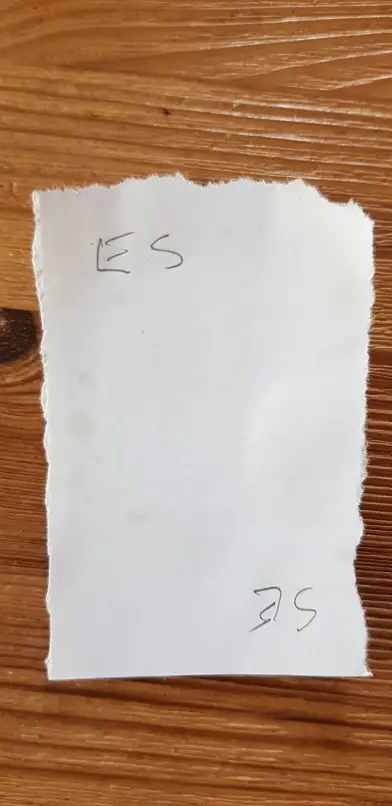Those were the words I said when I woke up Sunday morning, 6th December 2020. “It’s like rummy but with letters on cards,… Word Rummy”,… this is the start of the FEZ journey.
It was the year of Covid and we’d been playing a lot of games, especially games with a regular pack of cards. Before we discovered 6 Card Golf which is a firm favourite quick card game we’d been playing Rummy, a lot of Rummy and a lot of games in general.
I guess this is why my brain started stirring in the early hours with images of cards with letters on them and words being made with them. As I was supping my morning cuppa I started jotting ideas down on paper.
💡 Eureka #1
The images I’d seen in my mind had 2 letters on them. 1 wasn’t enough to be creative enough to form words if you had to have a regular pack of 52 cards with only 1 letter, that is only 52 letters of the alphabet, not enough letters! Even if I’d put a different letter at the top and bottom of each card giving 104 letters it still leaves only 7 or 10 letters in your hand to play words that doesn’t seem like enough letters to be creative. I had thought of 7 or 10 cards per person because that’s how many each player gets in Rummy, depending how many players. In my mind I could only see 2 letters together on each card.
💡 Eureka #2
After a bit of searching for English word lists, I did some quick searches for common digrams, ‘a sequence of two adjacent letters or symbols’. I then got some scraps of paper, ripped out some card shapes, and wrote a few digrams down on the paper pieces. I instinctively put the digram in the reverse order when I rotated the card, it was instinctive, no conscious thinking. After the 2nd card I wondered why I’d done it, it seemed obvious,… it gives more scope for a wider range of words that a player could make.
I did more searching and looked at other word card games, I couldn’t find anything like this, was that good or bad. Bad ‘cos it had been tried and was no good!! Or good because nobody had thought about it. The glass is half full with me so 🎺🎉 tada something new!
After an hour or so having brekkie and a cuppa I played around a bit and searched for more digrams to use. I didn’t have a full pack but I could see it could be something worth spending more time on. I finished brekkie and got back to the day.
I spent most of Monday in dev mode, lots of grepping and scripts with grep in them and then with my head in a spreadsheet.
#!/bin/bash
s1=`egrep -i $1$2 digrams.csv|cut -d ',' -f 2|awk '{s1+=$1} END {print s1}'`
s2=`egrep -i $2$1 digrams.csv|cut -d ',' -f 2|awk '{s2+=$1} END {print s2}'`
echo "$1$2/$2$1 => $(($s1+$s2)) = $s1 + $s2"This gives me the number of words in the Collins Scrabble Wordlist(CSW) list 2019, which has 279,496 words in it! Which incidentally is 2,853 words more than there were in CSW2015! 2,853 words new words added in 4 years!!! That’s nearly 2 new words per day!!
Over a quarter million English words! The average native English speaker knows between 20,000-40,000, so that’s a LOT more words that we could all learn to get better at FEZ and word games in general.
Bear in mind also that the CSW only lists Scrabble words, i.e. words up to 15 letters in length, there are words bigger than 15 letters, but that was enough for me to work with and see if the game had legs.
Anyway, the above code let’s me find out how many words contain certain digrams.
> ./num_words_bigram.sh a c
ac/ca => 25902 = 11344 + 14558
> ./num_words_bigram.sh l l
ll/ll => 26070 = 13035 + 13035
> ./num_words_bigram.sh e s
es/se => 81698 = 59483 + 22215This allowed me to find how many words had the letters ‘a’ & ‘c’ or ‘e’ & ‘s’ for example. ‘es’ is the most common digram and is used in 59,483 words alone. I figured there was enough scope to continue so wrote a script that counted all possible digrams in the word list and listed them in descending order and put them in my spreadsheet.
Towards the end of the day I ordered a pack of blank playing cards from Amazon on next day delivery ready to make my first pack!!

